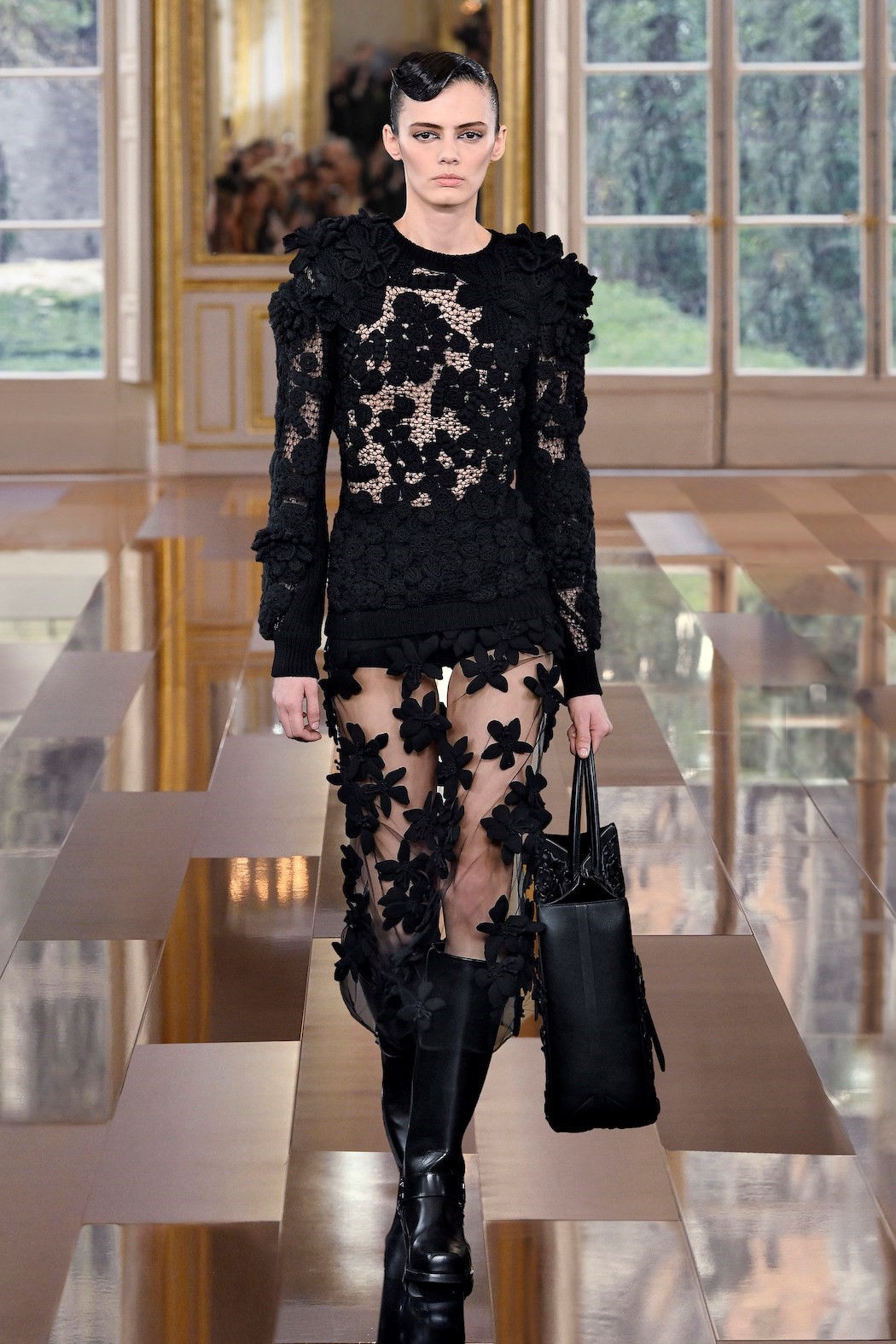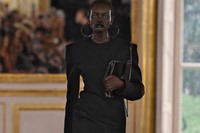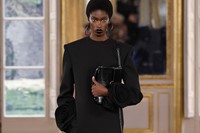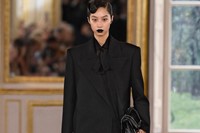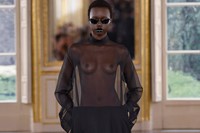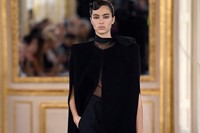Pierpaolo Piccioli wears black near-religiously. I haven’t ever seen him in anything else. Maybe that’s because black works for most days and occasions – you can wear black tie for formal, a black t-shirt or sweatshirt for casual, throw a black blazer over to dress it up just enough. Those are the outfits I normally see Piccioli in, especially when he’s working. “I wear black as a uniform and I am aware of it – it allows me to focus on what’s around me,” he says. Plus, on the other side of the equation, black makes you nicely invisible, especially in fashion when so many others wear black too. I remember once being permitted a twenty-minute backstage at an Armani show and, dressed in unobtrusive black, winded up staying for two hours. I doubt that would’ve happened if I was wearing shocking pink.
There was, however, nothing unobtrusive or invisible about Piccioli’s latest Valentino collection, although the whole thing was black. These looks grew, he said, from the finale of his Valentino haute couture show back in January, of five all-black outfits, evening gowns in chiffon and lace and velvet, with a tuxedo homage to Yves Saint Laurent thrown in for good measure.
This time, he expanded the idea to an entire collection. It was another exploration of head-to-toe single-hue dressing that brought to mind his exploration of pink back in 2022. That was based on Lucio Fontana – there was, actually, a section of black in the middle of the show that, for me, recalled the contrasting black toile that Fontana used to ‘line’ his canvasses with – but this collection was pure Piccioli, and quintessentially Valentino. The notion of an entirely black collection for a master colourist like Piccioli could seem like cutting your arm off, but Piccioli has told me a few times how he likes rules, sometimes breaking them, but often working within the confines they create to find new paths. That’s what it felt like happened with this Valentino show, where rather than creating a jolt of interest or attracting attention through strident colour, Piccioli focussed instead on fabric manipulation, embroideries, embellishment and silhouette to create impact.
The silhouette was, perhaps, the most striking element – and, of course, silhouettes as an art form were always black. Ironically, their name was derived from that of Étienne de Silhouette, French Ancien Régime Controller-General of Finances under Louis XV, who brought in austerity measures to curtail the country’s deficit and whose name became synonymous with anything done or made cheaply. Silhouettes, being simple cut-card portraits, were cheap as frites. Of course, that discourse has nothing to do with Valentino, whose stance as a Roman couture house is integral to its identity. If from a distance dresses appeared to be simple, graphic black silhouettes, they often exploded into detail up close, with a minutiae of pleats or ruffles, a chiaroscuro of lace or tulle. “I approached black as a canvas,” Piccioli said.
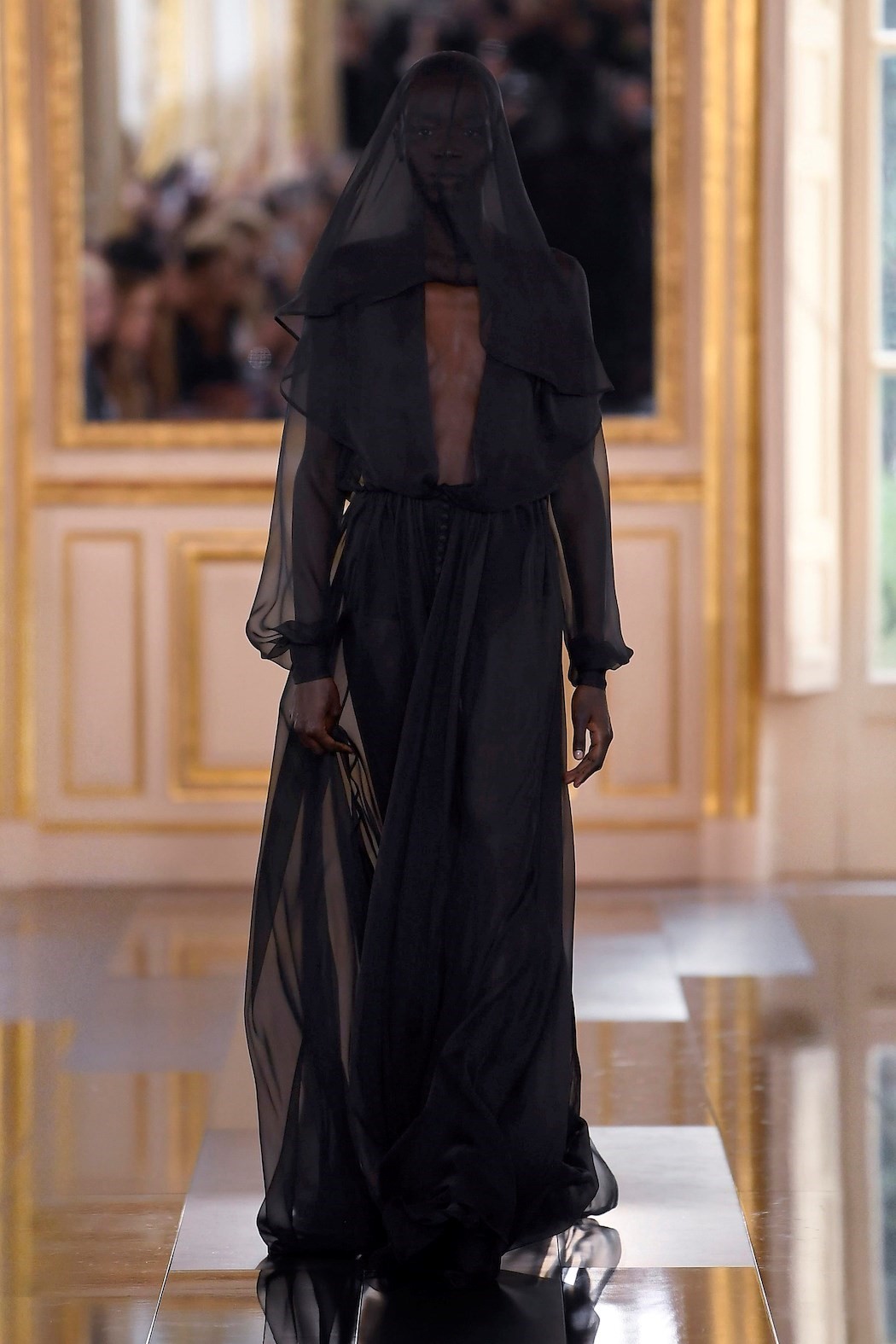
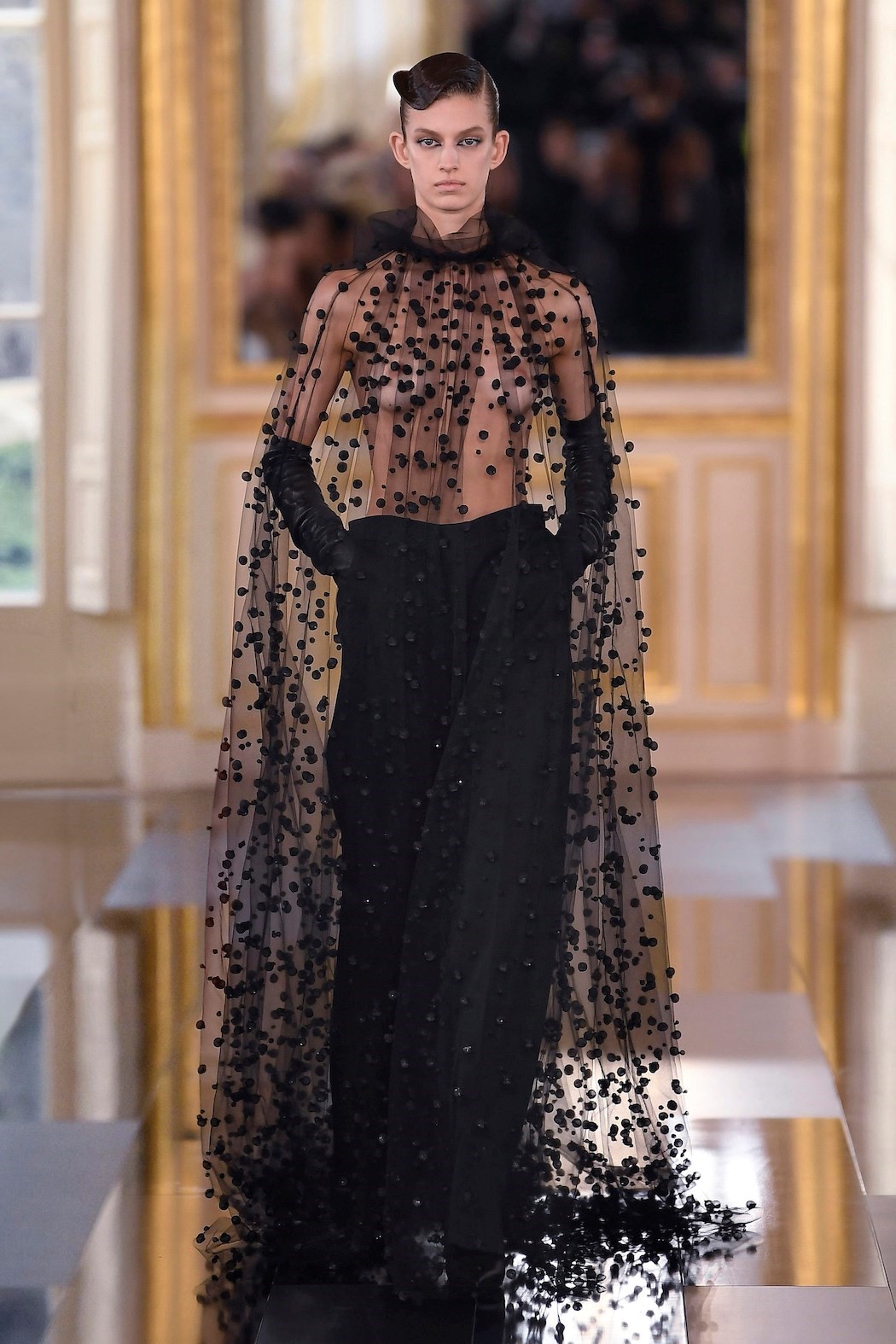
If that’s a general identity of Valentino, there were more specific echoes within this show. Colouring garments in black gave them a toughness, meaning that Piccioli explored Valentino’s archives more directly than ever before. The ‘Fiesta’, a dance dress swirled with tulle and hemmed with roses from Valentino’s first collection in 1959 – incidentally, the first iteration of the famous Rosso Valentino – became a brief body-formed top; an asymmetrically pleated red dress from 1981, immortalised by the painter Fernando Botero, was reiterated almost identically. And the broad-shouldered silhouette of the 1980s, when Valentino first began to show couture in Paris and when both the designer’s name and his own lifestyle became aspirational markers of success for the decade’s nouveaux riches, was explored for the first time. Grounded in black, however, it was all given a new reality, and relevance.
For Piccioli, there was poetry in black. He quoted Charle Baudelaire, summoning the dandy as the black prince of elegance, and quoted the work of Mark Rothko, Pierre Soulages and Constantin Brâncuși. But there is also a democracy in black, an innate relatability. It brought these grand couture gestures back to earth, for some of the show. But in the eveningwear, even black couldn’t cold down the gossamer fabrics and decorative techniques, which were some of the most beautiful Piccioli has ever proposed, and boggled the mind when considering they, technically, bear the quotidian moniker ‘ready-to-wear’. Ready to dream seemed more appropriate. “From the black I seek light, in black I refine my sight,” wrote Piccioli as precursor to his show notes. This was a collection of utmost refinement, and a sight to behold.
